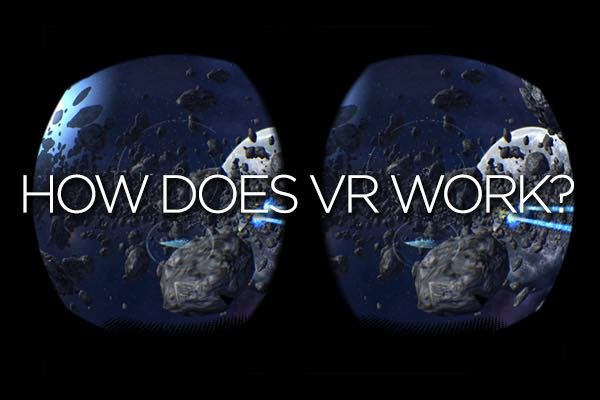
1. What exactly is Virtual Reality?
Virtual Reality (VR) is the complete immersive 3D experience that users get with wearables from VR. A person who either becomes part of this virtual world or immersed in this environment and can manipulate objects or carrying out a series of actions interacts with this computer generated environment.
2. What types of head-mounted displays are available for Mainstream?
We can now classify VR devices into three distinct groups: Mobile VR based devices, PC based VR devices, and Standalone VR Devices.
Mobile VR Basis
We can also classify mobile based VR into two groups: carton and plastic. Cardboard VR is the cheapest option and can easily branded and distributable to clients. The other plastic VR devices are slightly more expensive than the carton option and have a range of manufacturers. VR viewed like Homido VR is an example of a good quality product to experience VR on a range of phones. Samsung has a dedicated VR viewer, called the Samsung Gear VR, which works only with their range of mobile phones.
VR-Based PC
Just as much as VR is convenient on a mobile device for promotions, events, etc. VR is a whole different ballgame on a PC! You could say it's thanks to the PC's superior hardware performance and you wouldn't be wrong. When you're going for quality over quantity, using a desktop computer and a VR HMD is a brilliant combination! HTC Vive and the newly released Vive Cosmos, and one of the first companies to bring out a state-of-the-art headset, Oculus Rift, are some hardware that we have experience with and have used to produce groundbreaking VR experiences for our clients. All these require a high-end PC to run, but the results are more rewarding, leaving your customers dropped with their jaws!
Autonomous VR
The standalone VR devices are certainly a fresh addition to the world of VR HMD's, last but certainly not least in this classification. They 're a mix of the two worlds from the above groups, mobile and PC. This group offers the flexibility to use a mobile device and the additional quality of a dedicated VR HMD that we see on the HMD's PC. However, the key players here aren't new, its Oculus, with two primary products, the Oculus GO, as an option for entrants and Oculus Quest for more advanced users. HTC brought the Focus to the party, the standalone headset a bit more expensive to take on.
3. If we wish to purchase VR gear, which one would you recommend?
It really depends on what you want to do, the size of your target audience and on your budget.
The Google Cardboard and Homido VR applications can develop and optimized in terms of content for all mobile phone platforms. The enormous advantage is that numerous people can use apps, and in terms of cost, HMDs are at the low end. But if you need more content control and better graphic quality, you may opt for Samsung Gear VR, so you can invest in Samsung VR Gear and match Samsung phone (on Android platform).
Oculus Rift and HTC Vive require dedicated PC platform, hence they come at a higher price tag. They can support high-quality graphics and provide greater control means than mobile platform HMDs. We can make VR applications for PC platforms that are currently targeted at limited users and dedicated to specific company use cases.
4. Should we expect more people to wear headsets?
Not really, because for that very reason several companies have included web-based Virtual Reality: they don't want people waiting for VR headsets to spread, or people consuming VR content on their mobile phones. Instead, web-based VR means it allows people to open the browser, click on the link, and access VR content. Ultimately, a lot of VR companies want to democratize VR experience and enable it to reach as many people as possible, which also leads to greater market opportunities.
5. Our company mainly wishes to use VR for events and trainings. Because we need over one VR gear?
You can start small and expand your "park" head-mounted display. The New York Times shipped thousands of Google cardboards to call attention to one of their campaigns and directly reach their readers in their households. You can choose to go for one particular brand and one item, i.e. gear and branch out afterwards, though.
6. Which industries are VR mostly used in?
We have already applied virtual reality, like Augmented Reality, in tourism, retail, real estate, education, healthcare, marketing, and many other vertical areas. The big argument in favor of VR is that they are being used by both Fortune 500 brands and boutique companies that want to be at the innovation frontier.
Virtual Reality solutions will become mainstream in all customer-facing industries over the next 12-36 months in order to deliver stronger and more immersive experience. In their comprehensive VR / AR report, the Goldman Sachs team showed the size of each industry and the number of registered VR / AR users so far, so it's worth checking out.
7. What is the estimated global market size for VR?
Statista outlined the mutual size of the size of the global augmented and virtual reality market for the 2016—2020 period. This amounts to USD 6.1 billion in 2016, and USD 13.9 billion in 2017.
According to IDTechEx's most recent reports, AR, VR, and MR Market estimated at well over $30 trillion in 2030!
Bloomberg showed that if we look at the Chinese market alone, their VR market will be $8.5bn. Since China is working hard to push the low-cost model and many of its brands are shipping headsets, their gigantic firms can leapfrog the giants in the US. The Ritech headset, for example, sells over 100,000 units monthly for $20.
The report of Grand View Research, Inc. contains another piece of statistics worth considering. This firm estimated that the global market for virtual reality (VR) expected to reach USD 48.5 billion by 2025.
8. Thanks to VR, how can our company differentiate?
Thanks to VR solutions, there are many ways that your company can stand out. Certainly, Virtual Reality helps your potential customers engage with your product, service, and content longer (literally and virtually) through the VR lens. Second, you can see if we have applied Virtual Reality in your niche so far (most likely), and how you feel about it.
Sometimes, you can get inspired by Virtual Reality solutions across different markets, geographies and industries and create something entirely new that will leave your loyal customers and competitors speechless. The first ones become speechless because they are proud of you and the second because they can not keep to your pace.
9. What factors should I consider when choosing a company from AR / VR?
In this article we have written about making an informed choice, which will allow you to avoid mistakes and make a much better decision on which VR company to hire.
In a nutshell, the experience, portfolio and a range of clients , business processes, international experience and innovativeness of the team should considered and assessed. All these factors will help you decide with greater accuracy if the company you choose can really deliver.
Customer experience is also so important. If it treats equally you before becoming a customer and subsequently when you are in a funnel or when you have bought something, this shows that the company really cares about its customers. So often after making a purchase, customers forgotten or even neglected and had a transaction with the company.
10. How do you estimate project price?
When estimating the project's price, there are several factors we consider: the complexity of the solution and the amount of work required to generate computer graphics, animations, means of interaction and control HMDs. With 360 photographs and videos, it depends on whether you are supplying the material or filming, and arranging video editing.
Another factor affecting the rate of development of VR applications is how much the VR team (including developers, marketers and project managers) charges for their time , quality and results. For example, according to the website Think Mobiles: you'll charged $40-$240 per hour in North America (the US and Canada) with the work of developers. In Western Europe a programmer's hour costs $40-$180, while it costs $25-$70 in Eastern Europe, and $5-$70 in India.
In addition, we can't stress enough how important it is for the client and VR development team to create a specific VR documentation where both sides kept in the loop. Usually the documentation includes the project's goal, features, screenshots and references of the aforementioned or existing projects, and it is a comprehensive guidance on where the project is.
11. How much background knowledge do we need as a client to convey exactly what VR app we need?
The more you know what you want to achieve with this technology, the easier the solution comes up. What you should always remember is that this technology is secondary, it's the people who are using it and the result that we all want to achieve comes first.

You should also check out the following articles:
- VR BUYING GUIDE AND THE BEST VR HEADSET FOR 2022
- A meta market opportunity: The metaverse could soon be worth $1 trillion
- Facebook wants to build a metaverse. Microsoft is creating something even more ambitious.
- How to succeed in the virtual reality world of tomorrow?
- Books you must read about virtual reality
- Best New Augmented Reality Books To Read In 2021
- US$ 4.7 Billion- The global augmented reality gaming market
- The smart glasses revolution is about to get real
- Consumer Brands Reinventing Marketing in the Metaverse
- Imagine Making Money in Rec Room
- The biggest AR and VR predictions of 2022
- Apple hired Meta's AR communications lead ahead of the 2022 launch of the headset.
- Who Will Be in Charge of the Metaverse?
- The Kingdom of Abraham: The first Jewish metaverse
- Gen Z are planning to spend thousands on cryptocurrency, NFTs and metaverse
- According to Goldman Sachs, the metaverse must run on blockchain
- What You Can Create With a Small Piece of Land in the Metaverse
- How To Buy Land In The Metaverse?



